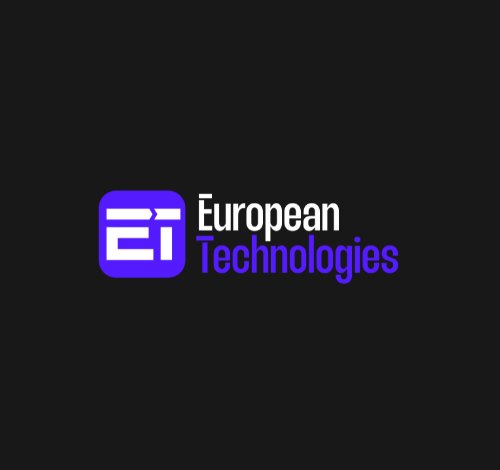Neuroscience to AI: How Shiyi Pickrell is helping Expedia connect the dots in a data-driven landscape

Neuroscience to AI: How Shiyi Pickrell is helping Expedia connect the dots in a data-driven landscape
It might sound like a leap at first, but the more you think about the similarities between neuroscience and Artificial Intelligence, the more it makes sense. In fact, some of the earliest working artificial neural networks from the 50s – the building blocks of today’s AI – were modeled after the way the brain works.
Still, when Expedia Group’s SVP of Data and AI, Shiyi Pickrell, pursued her neuroscience degree, it’s hard to say if she could have predicted its relevance to her future work in artificial intelligence and data science.
Neurons, like their AI counterpart, perceptrons, are all about connecting the dots – something that Pickrell does for Expedia and its tech partners on a practical level.
“I started learning how the brain works,” said Pickrell during a breakout session at last month’s EXPLORE 24 partner conference in Las Vegas. “I worked in biotech, ecommerce and AI in agriculture and I eventually became a machine learning scientist.
“Now, I am teaching machine learning models to mimic what the brain can do, but on a much faster and bigger scale. Think about logic, planning, optimisation, prediction, conversation – I’m taking machine learning and AI and applying it to travel.”
In fact, the purpose of said breakout session was for Expedia to discuss the applications of AI and machine learning on a more grounded level with its partners; with so much buzz and, frankly, jargon out there, it was important to sift through the noise and talk about AI in a way that made business sense.
It’s also probably worth taking note of the things AI cannot do, as opposed to all the things that it can at the moment.
Speaking with WiT, Pickrell said, “There are a lot of things I think, initially, AI may not be able to do but in the long-term, it might [get there]. Having high-quality data is important for every business, especially in travel. For traveller behavior – if they’re browsing on the internet, or in our app, or what they purchased, and so on – how quickly you can process the data.
“I don’t think Gen AI or AI can create something out of nothing. However, where Gen AI can play a role is things like data discovery – where the data is in a lot of people’s travel knowledge. For example, we discovered that we could use Gen AI to create a chatbot to help people to say, hey, where can I find this data? If that person can transfer that knowledge to the bot, then you have a 24/7 assistant.”
The topic of AI assistants is interesting, particularly at Expedia, who recently unveiled Romie, their AI-powered travel assistant that can be integrated into third-party apps like WhatsApp to plan trips in the background based on browsing data and real-time conversations.
One has to wonder – is monetisation of AI the next step in this trajectory? It wouldn’t be very different from, say, Google, a search engine that shows sponsored results before organic ones. Sponsored products on ecommerce websites would be another example.

Shiyi Pickrell: “I don’t think Gen AI or AI can create something out of nothing. However, where Gen AI can play a role is things like data discovery – where the data is in a lot of people’s travel knowledge.”
“I would rather not jump straight into ‘every GenAI use case has to be scrutinised by the lens of monetisation or AI’. It’s really about helping customers and travellers discover and fall in love with travel again,” emphasises Pickrell.
“Today, there are so many friction points. People browse and dream about their vacations before they come to our platform or app, so it cannot be so transactional.
“I think if we can merge the discovery and dreaming phase with the transaction phase and make it seamless, it will lead to a lot of fruitful things. That’s exactly what Romie can help us do – to bring the dreaming and planning phase into the transaction.”
Experts like Pickrell have their work cut out for them. Gartner predicts that by 2026, 30% of new applications will use AI for personalisation, resource efficiency, accuracy, automation, and decision support. That’s up from less than 5% today.
However, Pickrell’s approach to mass AI testing and implementation is more nuanced – quality instead of quantity, precision instead of brute force. Pickrell stresses that it’s not about the technology itself but the customer experience it enables, calling the former approach a common misconception about AI.
“Machine Learning (ML) and AI is the technology, but it’s really the experience that makes customers fall in love. If you do ML and AI right, maybe they won’t even notice them – it’s so graceful, so elegant,” she said.
Pickrell continued, “Some people might say, what’s your company strategy? Do more AI? But I think it’s really about going back to the basics and really helping our customers have a great experience.”
Although there’s significant demand for AI advancements, Pickrell advocates for a balanced approach towards creating, engineering and adoption of new AI tools. “Another word of caution about ‘buy versus build’, said Pickrell, “a lot of companies and their Machine Learning scientists immediately want to build Large Language Models from scratch, in-house, because it’s cool. They can put it on their resume. But this field is moving so quickly.
“If you build something from scratch, there are lots of parameters to train, the cost, the speed to market is slower… while AI companies out there can come up with new versions in just 3 to 6 months. You can finetune it. You can use the RAG (Retrieval Augmented Generation) to augment it with your in-house data, and you get something very equivalent. And it doesn’t have to cost an arm and a leg.”
Nevertheless, as an OTA as well as a tech provider, it’s safe to assume that there must be pressure on Expedia, a company that has worked with AI for a long time, to continuously and rapidly produce cooler, swankier, shinier AI solutions for its partners.
In closing, we asked Pickrell if the demand can get unrealistic or even overwhelming at times.
“Let me answer it in a different way,” replied Pickrell. “There is definitely a lot of craving for it right now – there are definitely more people knocking on my door, even internal teams saying hey, we want to unlock it in a reasonable way.
“Like any scenario, there will be a certain bust-to-success ratio, so we want to give them a way that they can quickly try it out without losing our priorities. Internally, we provide a Gen AI platform that allows the team to leverage many different resources. For example, open-source ones, commercial ones or even in-house solutions, so this way everybody can go faster.”



